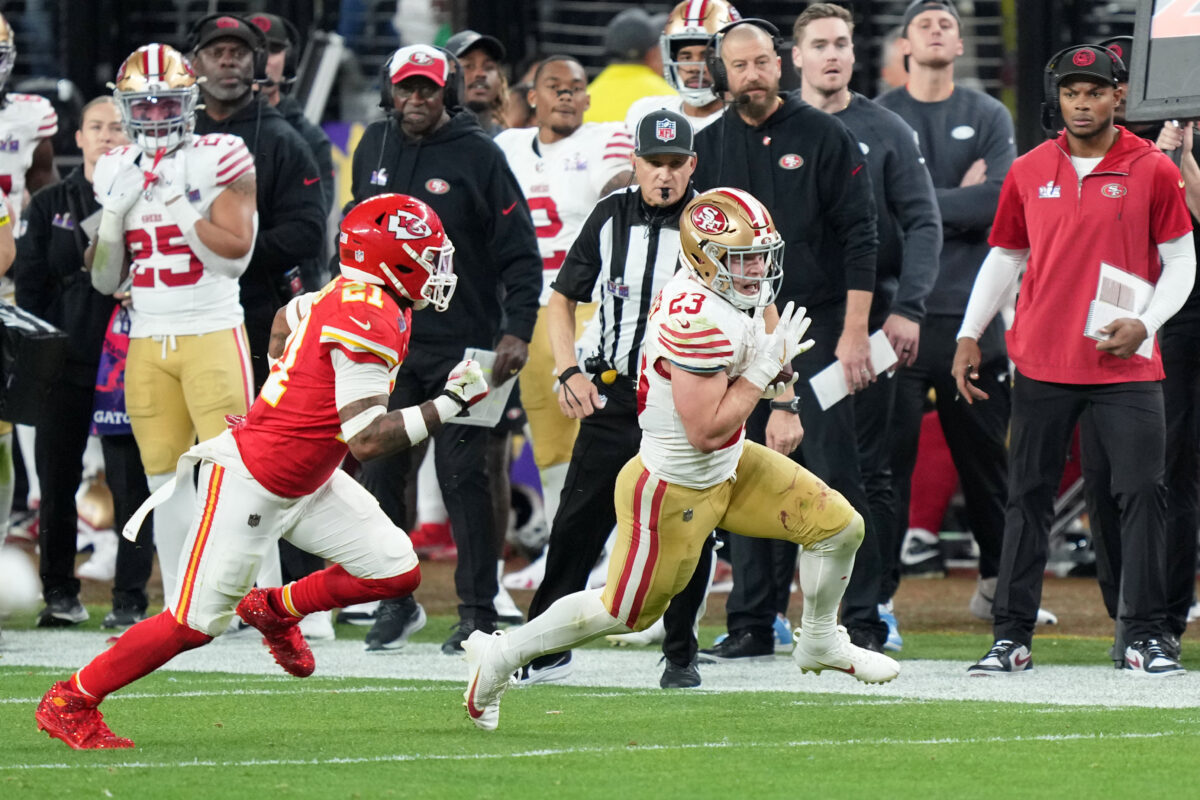The San Francisco 49ers for the last two seasons have been up against the dreaded ‘rest differential‘ thanks to their schedule.
A key talking point when the NFL releases its full schedule is the number of days a team has off between games compared to its opponent. If Teams A and B face off after having played the previous Sunday, the rest differential is zero for both teams. If Team A played Monday night, and Team B played Sunday, Team B would have a plus-one rest differential when facing Team A the following Sunday.
The 49ers have been on the wrong side of the rest differential by historical proportions in each of their last two schedules. In 2023 they had the sixth-worst rest differential of all-time. This year they have the third-worst.
In 2023 it didn’t matter in the grand scheme of the season as the 49ers finished 12-5 and snagged the No. 1 seed in the NFC.
So far in 2024 it hasn’t mattered much either.
San Francisco through six weeks has yet to play a game with a positive rest differential, and there’s no clear evidence that being at a rest disadvantage has actually hurt the 49ers.
They had neutral rest differentials in Week 1, Week 3, Week 5 and Week 6.
In Week 1 they beat the Jets. They lost in Weeks 3 and 5 to the Rams and Cardinals, respectively. Then they beat the Seahawks on Thursday Night Football in Week 6.
In Week 2, thanks to a Week 1 Monday Night Football game, the 49ers were a minus-1 rest differential in a loss to the Minnesota Vikings.
On the other hand, the Patriots had a plus-three rest differential in Week 4 when they visited Levi’s Stadium, and San Francisco handled them with relative ease.
Now it’s up to the 49ers to continue shrugging off rest disadvantages because they’re going to have two big ones entering their next two games.
The Chiefs, who were on a bye in Week 6, will have a plus-three rest differential at Levi’s Stadium in Week 7.
Then the 49ers host the Cowboys in Week 8 after Dallas has its bye in Week 7. That means they’ll have a plus-seven differential when they visit San Francisco.
While the rest advantage is a preseason talking point, the 49ers don’t have the margin for error to use it as an excuse. They overcame a season full of tough schedule spots last year, and they did it once already this year. That trend needs to continue heading into their Week 9 bye if they want to put themselves in position to potentially push for the No. 1 seed again.
[lawrence-auto-related count=3]
